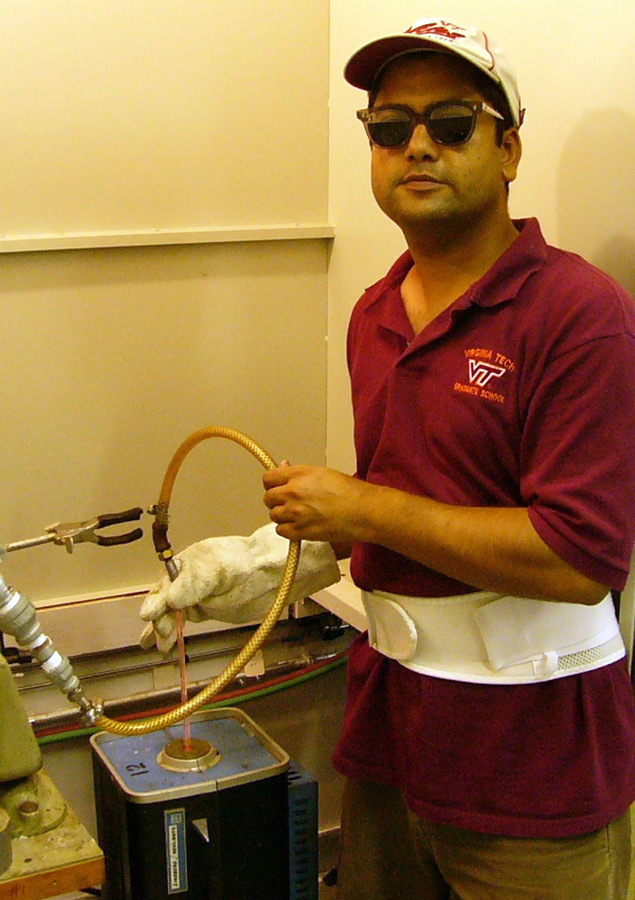Graduate and research team develops new method for making optical fibers

Nitin Goel, a graduate of the College of Engineering at Virginia Tech, along with a team of researchers, has discovered a new way to make optical fibers with compound glass cores. Called “core-suction,” the method is ideal for producing the non-linear fibers required for fiber lasers, Raman amplifiers, and continuum generation.
The core-suction technique is attractive to optical fiber producers because it is simple and cost-effective. It also eliminates multiple processing steps which can lead to contamination. “Our approach avoids the problem of air bubbles which can form when the core material is melted inside the cladding tube,” said Goel who earned his Ph.D. in electrical engineering.
“We are hoping that this technique can be used to manufacture specialty fibers with very unique characteristics which are otherwise too difficult or too expensive to manufacture. These fibers can then be used for medical applications, sensors or in telecommunications,” said Goel. The Virginia Tech Intellectual Properties Inc. (VTIP) division applied for a patent on the core suction process in May of 2005.
Goel conducted much of this research while he was at Virginia Tech, and he is now employed as the manager of product engineering at Tyco Electronics Fiber Optics Business Unit in Bangalore, India.
Goel and his colleagues from Virginia Tech, with help from his colleagues from Fisk University, had success in fabricating several preforms using the new core-suction technique. A variety of materials for the core were experimented with, such as Schott SF6 glass, lead-telluriem-germanate core glass, and lead-germanate-tellurite-erbium. The core-suction method also allows for the use of small quantities of starting materials so more expensive and higher in purity materials can be used to produce the optical fibers.
One of the biggest successes using this technique was an erbium doped phosphate glass fiber manufactured using MM2 glass from Kigre Inc. as a core material in silica cladding. These fibers were easily spliced to the standard communication grade fibers using a commercial splicer. “Compared to tens of meters of standard erbium doped fibers used in typical erbium doped fiber amplifiers, we could make optical amplifier using 1 cm and 5 cm lengths of these MM2 glass fibers instead,” said Goel. Distributed gain spectra for these erbium doped fiber amplifiers were measured using Luna Technologies’ Optical Backscatter Reflectometer (OBR) and erbium doping in the core was found to be quite uniform.




